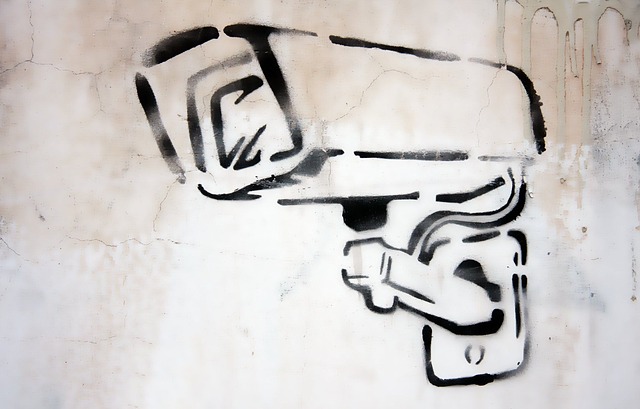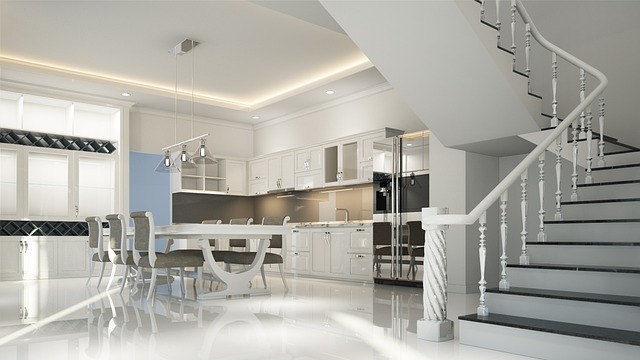The article emphasizes the necessity of updating security measures in older and vintage homes to enhance protection while preserving their historical charm. It provides guidance on how to modernize home security in such residences by integrating discreet, state-of-the-art security systems that respect the architectural integrity of these properties. Key points include the use of smart locks, advanced alarm systems with strategically placed sensors, and unobtrusive surveillance technology that aligns with the vintage ambiance. The article underscores the importance of tailoring home security updates to address the unique needs of older homes, ensuring that traditional home safety is not compromised in the process. It also highlights the significance of collaboration with architectural experts and local preservation authorities to maintain the historical character of the property during upgrades. Homeowners are encouraged to consider reversible security solutions that combine modern technology with retrofit applications for old homes, thereby providing robust protection without altering the home's original aesthetics. The article serves as a comprehensive guide for those seeking to enhance traditional home safety in historic dwellings through thoughtful and respectful modernization.
Older homes exude charm and history, offering a unique character that modern constructions often lack. However, with advancing technology and evolving security threats, ensuring the safety of these treasured abodes is paramount. This article delves into the pivotal topic of retrofitting security systems in vintage buildings, providing a comprehensive guide tailored for homeowners seeking to modernize their home security without compromising on the aesthetic integrity of their old homes. From understanding the importance of upgrading to learning strategies for integrating contemporary features with traditional architecture, we aim to equip readers with the knowledge and tools necessary for secure, historically sensitive updates. Join us as we explore the essentials of securing historic homes in the modern age.
- Embracing Modern Security Solutions in Vintage Homes: A Guide to Retrofitting
- The Importance of Upgrading Home Security in Older Buildings
- Strategies for Retrofitting Security Systems in Historic Properties
- Enhancing Traditional Home Safety with Contemporary Security Features
- Step-by-Step: Modernizing Home Security in Older Homes Without Compromising Aesthetics
Embracing Modern Security Solutions in Vintage Homes: A Guide to Retrofitting

When it comes to securing vintage homes, integrating modern security solutions is not just about enhancing protection; it’s about preserving history while ensuring safety. Homeowners of older residences can significantly bolster their home security by carefully selecting upgrades that complement the structure’s traditional aesthetics. Retrofitting security systems in historic homes requires a delicate balance between respecting architectural integrity and implementing effective, modern safety measures. For instance, advanced security cameras with discreet designs can be installed to monitor without altering the home’s classic appearance. Similarly, smart locks that blend with vintage door hardware offer both convenience and enhanced security, allowing residents of older homes to enjoy the benefits of modern technology while maintaining the character of their abode.
Older buildings often have unique architectural features that can pose challenges for contemporary security systems. However, with careful planning and professional guidance, retrofitting home security can be seamlessly integrated into these structures. Upgrading home security in an old house involves not only installing state-of-the-art alarm systems but also ensuring that sensors and detection devices are strategically placed to cover any weaknesses in the building’s original design. This careful approach to retrofitting home security for older homes ensures that traditional home safety is upheld, with the added peace of mind that comes from knowing one’s property is protected by the latest advancements in security technology.
The Importance of Upgrading Home Security in Older Buildings

In the realm of home security, retrofitting systems into older buildings is a prudent step for safeguarding vintage homes. As homes age, their security measures often become outdated, leaving them vulnerable to modern threats. Upgrading home security in these structures not only enhances protection but also aligns with the evolving needs of residents. The integration of modern technology into an old home’s architecture can be seamlessly executed through retrofit solutions, ensuring that historic integrity is preserved while offering robust security features akin to those in contemporary dwellings. Homeowners of older properties can significantly bolster their traditional home safety by investing in upgrade home security systems tailored for their unique architectural design, thus bridging the gap between old and new, and providing peace of mind without compromising on aesthetic value.
Older buildings, with their unique construction, present specific challenges that modern security systems must address. Retrofitting security systems in these structures is not merely a matter of installing new hardware but also involves thoughtful integration that respects the home’s character. Homeowners looking to modernize home security in old homes should consider solutions like motion-detecting cameras, silent alarms, and smart locks. These upgrades are designed to harmonize with the vintage home security elements, ensuring that old home protection is both effective and sympathetic to the property’s legacy. By carefully selecting security for historic homes that blend functionality with sensitivity to the building’s charm, residents can enjoy comprehensive home safety improvements without detracting from their home’s timeless appeal.
Strategies for Retrofitting Security Systems in Historic Properties

When considering the security for older homes, it’s crucial to balance modern protection with maintaining the integrity of vintage architecture. Upgrading home security in a traditional setting requires a delicate touch, ensuring that the upgrade home security measures do not detract from the historic charm. Retrofitting home security systems in old homes involves careful planning and selection of components that blend seamlessly with the structure. For instance, motion detectors can be integrated into existing designs, while silent alarms can provide the necessary alertness without disturbing the neighborhood. Similarly, surveillance cameras should be installed to be as unobtrusive as possible, preserving the aesthetic appeal of the property while providing modern home security updates.
Older homes often have unique architectural features that can be leveraged for optimal traditional home safety. For example, large windows that are characteristic of historic properties can incorporate advanced glazing that deters intruders without obscuring views. Additionally, robust locks and reinforced doors are essential old home protection measures that offer a blend of modern technology with time-tested methods. The process of retrofitting security systems in historic properties should also consider the wiring of the house to accommodate new security technologies without compromising its historical value. It’s imperative to work with local preservation authorities and architectural experts when implementing home safety improvements, ensuring that the vintage home security system is both effective and sympathetic to the property’s heritage.
Enhancing Traditional Home Safety with Contemporary Security Features

In the pursuit of safeguarding vintage abodes, retrofitting modern security features into older homes is a prudent approach. Traditional home safety can be significantly enhanced by integrating contemporary security technologies tailored for historic residences and older structures. These upgrades not only bolster protection but also preserve the integrity of these homes. For instance, discreet camera systems can be installed to monitor without altering the architectural charm. Motion-activated lighting, a relatively unobtrusive addition, deters potential intruders while maintaining the classic aesthetic. Homeowners are increasingly opting for security systems that blend seamlessly with the vintage ambiance of their homes, ensuring old home protection is not compromised by the desire to modernize home security.
Moreover, advancements in technology have made it feasible to retrofit home security updates without disrupting the character of the building. Solutions such as smart locks and wireless alarm systems can be integrated into old home structures, offering both convenience and peace of mind. The process of upgrading home safety improvements often involves subtle modifications that respect the property’s historical context while providing state-of-the-art security features. It’s a delicate balance, but one that is achievable with careful planning and an understanding of the specific needs of older homes for modern security systems.
Step-by-Step: Modernizing Home Security in Older Homes Without Compromising Aesthetics

When modernizing home security in older homes, it’s crucial to maintain the architectural integrity and charm that define vintage properties. Homeowners can upgrade their home security systems by integrating unobtrusive, cutting-edge technology that complements the traditional aesthetics of their old home. The first step is to conduct a thorough assessment of the current security measures in place, identifying any weaknesses or outdated components that could compromise protection. Security for older homes can be significantly enhanced through retrofitting solutions that blend seamlessly with the home’s character, such as motion-activated cameras and silent alarms that preserve the vintage ambiance while providing modern old home protection.
Older buildings often have unique structural features that require tailored security solutions. For instance, vintage home security can be bolstered by installing modern alarm systems with discreet sensors that don’t mar the historic charm of the property. Additionally, advanced locking mechanisms can be retrofitted into existing doors to ensure old home protection is robust against intrusion attempts. It’s essential to choose products designed for retrofit home security applications, ensuring that any modifications are reversible and that original design elements remain intact. By carefully selecting which modern technologies to integrate, homeowners of older homes can achieve a balance between traditional appeal and the need for enhanced safety measures.
In conclusion, the case for retrofitting security systems in older buildings is clear and compelling. By adopting modern security solutions tailored for vintage homes, property owners can significantly enhance the protection of their cherished abodes without detracting from their historical charm. The strategies outlined in this guide offer a pathway to seamlessly integrate contemporary security features into traditional settings, ensuring old home protection is both robust and aesthetically harmonious. For those invested in maintaining the integrity of historic properties while prioritizing modern home security updates, the provided steps serve as a roadmap to achieve a balance between the past and the present. Embracing these improvements not only safeguards one’s valuables but also preserves the architectural legacy for future generations. It is an investment in safety that respects the legacy of older buildings, making them secure while honoring their history.
